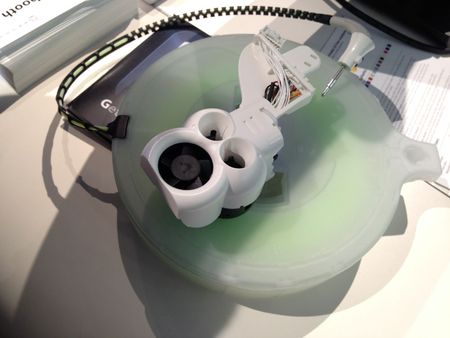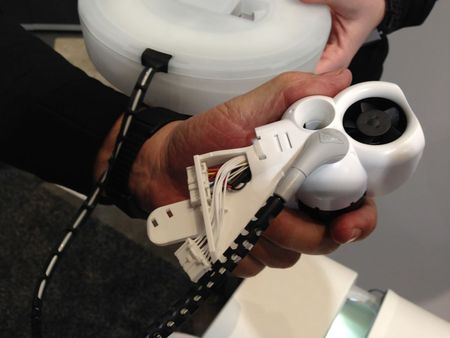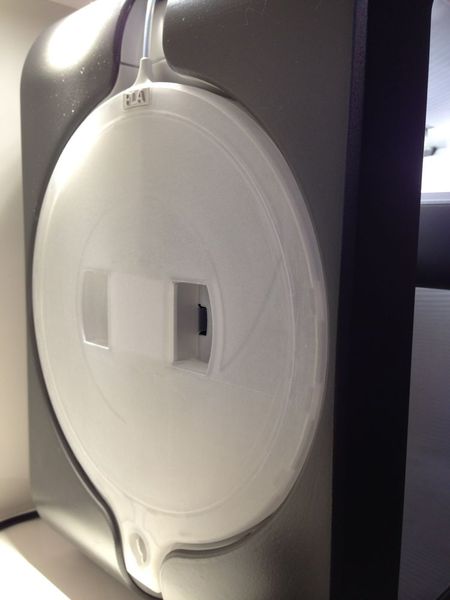Cubify’s new Cube 3 includes a fascinating new feature: extremely simplified material loading, made possible only through the development of a new way to handle plastic filament.
The new cartridges are quite different from any generic spool you’ve seen before. They’re sealed to prevent dust and dirt from contaminating the filament (which eventually clogs up your extruder). They include a tube running from the spool housing to the attachment point, meaning your filament is enclosed during its entire journey from spool to extruder.
The attachment point is much like an earphone jack. Just insert it into the Cube’s extruder and you’re done. No need for heating up to change them, either; they’re literally plug and play.
But perhaps the most revolutionary feature is that the spool is powered from behind. Most extruders include a mechanism to pull the filament from a spool. The new Cube spool does the opposite: a motor turns the spool itself, pushing the filament into the extruder. This feature should result in far fewer incidents of broken filament.
The cartridge is mounted on the side of the cube in a neatly shaped indentation.
The plastic in the spool is chemically consistent, meaning that the Cube’s software can be pre-calibrated for excellent results.
This all sounds good, but is there a catch? Yes, there is. The Cube can print ONLY from these proprietary cartridges, and they’re expensive when compared to generic filament. You can only use the colors and materials offered by Cubify, so you won’t be printing any wood filament soon, for example.
This is a case of cost/benefit analysis. The new cartridge does offer significant advantages – if you’re willing to pay for it. For many consumers, the security of knowing there will be fewer troubles will be worth the extra cost.





The catch is a big one. At least for the previous generation, a cartridge costed $50 and you received all of 300g to 454g (1lb) of filament. The exact amount, I'm not sure of, but the main point is, you're getting less than half the filament for the money compared to competing systems.
I like the idea of contained spool systems, but when it can only be done at the factory, it seems wasteful and they are overly expensive.